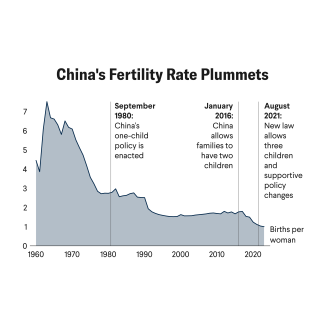Genetic changes in bacteria, viruses, fungi, and parasites that effectively shield them from antimicrobial medicines are collectively known as antimicrobial resistance (AMR). This natural process has been sped up by misuse or overuse of antimicrobials and a corresponding rise in drug-dodging pathogens due in part to climate change. Because antimicrobials are cornerstones of modern medicine, global action is required to prevent the alarming scenario in which common infections become untreatable and lifesaving procedures are no longer possible.
Although large-scale action will take time to develop, the emergence and transmission of COVID-19 showed the numerous ways in which the largest sector of the health-care workforce—nurses—were indispensable to response efforts. Research highlights nurses' critical roles in communication and antimicrobial management. They can prompt, remind, check, and query prescribers' decisions, contributing to optimal antimicrobial use.
Nurses hold considerable potential in monitoring antimicrobial choice, timing, and duration, and thus can be valuable assets in the fight against AMR if given the appropriate tools.
The COVID-19 Wake-Up Call
At the pandemic's peak, almost 80% of patients hospitalized with COVID-19 received an antibiotic. Progress in antimicrobial stewardship stalled during the same time frame for several reasons: health-care providers faced an unknown infectious, often deadly illness. The public was focused on the virus killing their loved ones, not on antimicrobial resistance. Antibiotics were easily accessible without prescriptions, and in the absence of an immediate cure, some used leftover antibiotics to treat COVID-related pneumonia. Nearly 40% of the 29,400 Americans who died from antimicrobial-resistant infections during the first year of the pandemic acquired the superbugs in a hospital.
To counter this negative trend, a return to the core antimicrobial stewardship program (ASP) elements, as outlined by the U.S. Centers for Disease Control and Prevention (CDC), is needed: leadership, accountability, pharmacy expertise, action, tracking, reporting, and education.
Empowering Nurses to Mitigate AMR
The world is evolving rapidly, including the expansion of aging populations, climate change creating an environment conducive to the spread of vector-borne diseases, and a shortage of infectious disease specialists. The largest sector of the health-care workforce, though, remains uniquely positioned to help protect patient health in this era of new challenges.
Nurses hold considerable potential in monitoring antimicrobial choice, timing, and duration, and thus can be valuable assets in the fight against AMR
Nurses play a pivotal role in antibiotic stewardship in various critical activities. They are responsible for assessing infection sources and implementing appropriate isolation precautions, often in consultation with infection preventionists. Nurses also take detailed antibiotic allergy histories, perform medication reconciliations, and ensure accurate documentation in medical records. They are instrumental in obtaining early and appropriate cultures before antibiotic administration, monitoring culture results, and communicating findings to physicians. Additionally, nurses review antibiotic orders for accuracy, verify doses and allergy histories, administer medications, and meticulously record these actions.
Despite these vital roles, their contributions to ASP are less defined than those of physicians, microbiologists, and pharmacists. To bridge this gap, ASP education is increasingly being integrated into nursing programs, as seen in initiatives presented in a 2019 white paper, created by the American Nurses Association and CDC, that aims to enhance nurses' knowledge and clarify their roles. Other health-care professionals can further empower nurses with training, mentorship, and collaboration. This education is essential for nurses to effectively contribute to patient care and the success of ASP initiatives.
In practice, this directive means that nurses are routinely recognized as valued ASP team members, championing environmental safety; participating in immunization programs to stop the spread of vaccine-preventable infectious diseases; ensuring timely removal of medical devices to prevent infections; and, when possible, recommending a switch from broad to narrow-spectrum antibiotics or from intravenous to oral agents to help ensure effective and safe treatment.
Closing the Health Gap Between Low- and High-Income Patients: How Nurses Can Help
Despite current efforts, 1.27 million people died from drug-resistant infections worldwide in 2019, and this number may skyrocket to 10 million deaths annually by 2050. Drug-dodging Mycobacterium tuberculosis, malaria parasites, and viruses such as HIV are already contributing to human suffering. Compared with their counterparts in high-income countries, many people in low-income countries cannot get to a hospital or obtain antimicrobials to fight off superbugs. This lack of access is worsened by a shortage of health-care professionals knowledgeable in infection control practices such as hand hygiene and appropriate use of antibiotics.
Thus, in low-income countries, nurses may be called on to be ASP leaders. By promoting hand hygiene, proper wound care, and vaccinations, nurses could help prevent infections, including those due to pathogens exhibiting AMR, from spreading. They could also help ensure that antibiotics are used wisely, avoiding unnecessary prescriptions and encouraging patients to complete their treatments. Furthermore, access to diagnostic tools such as approved rapid tests could help nurses identify infections and make informed treatment decisions.
Investing in global nursing education and ASP training is important because pathogens with AMR do not respect borders. Development of the next generation of antibiotics will likely yield more dividends, in terms of lowering the infectious disease burden, if nurses in low- to middle-income countries are also equipped with the skills and tools to combat bacteria, viruses, and parasites with AMR. This could help close the health disparity gap among countries, ensuring a healthier future for everyone.


